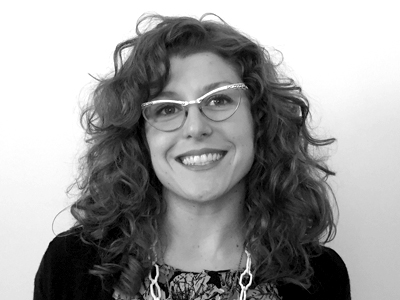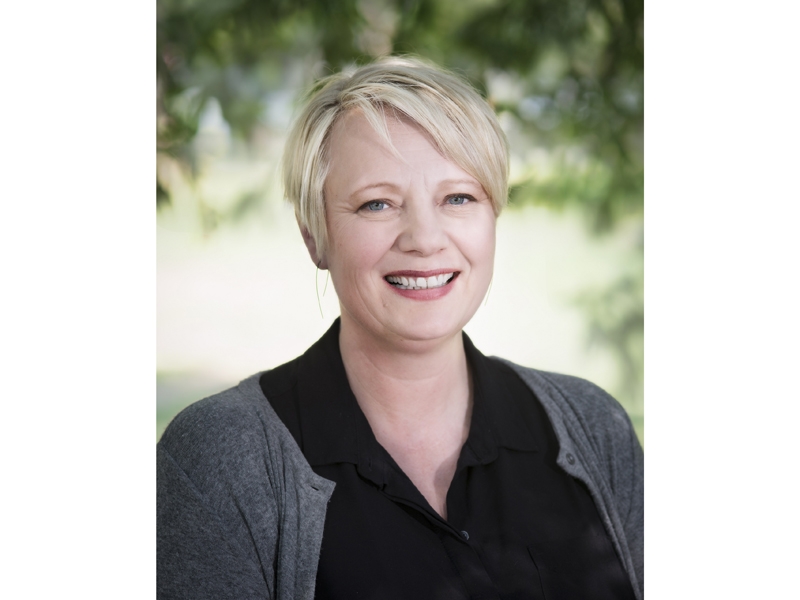
The Penland School of Crafts, located in the Blue Ridge Mountains of Western North Carolina, is a scenic retreat fostering focused creativity and exploration through robust class offerings, residencies, the core fellowship program, and exhibitions. All of this requires more than just an idyllic setting. Sustaining a legacy of craft education requires leadership and administrative acumen. In this interview, I have the pleasure of introducing AJF readers to Mia Hall, Penland’s new director. I caught up with Mia during her busy first days as director to learn more about her background, her artistic practice, and her passion for education.
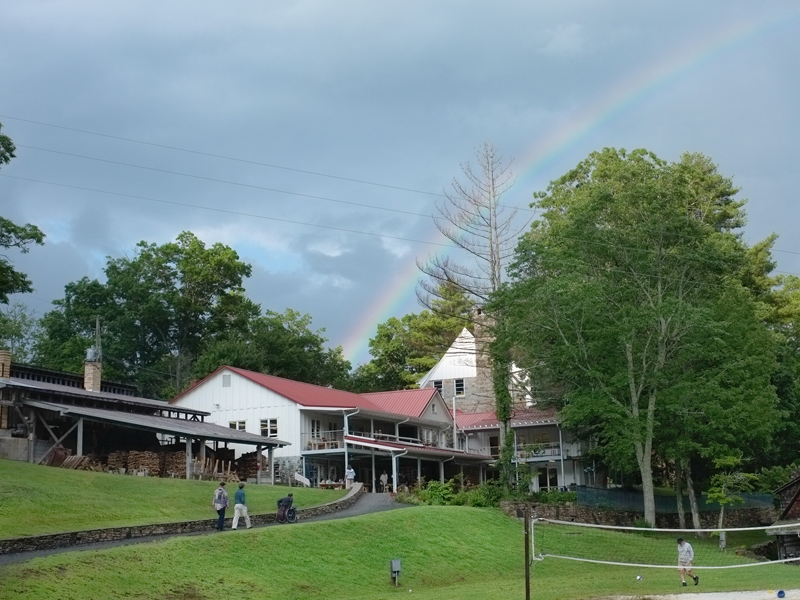
Adriane Dalton: Begin by providing our readers with some background information, such as the origins of your relationship to craft as both a maker and an educator.
Mia Hall: I have always had a love for, and a fascination with, objects. However, when choosing a career path in college, I, like so many other students, felt the need to stay on a path that had a clear line toward gainful employment. It was not until the end of my junior year at San Diego State University that I enrolled in a class titled Contemporary Craft and truly found my calling. The class introduced me to the different craft materials, and I found myself with a yearning and a deep desire to continue down this path. The teacher in that class was so encouraging and nurturing. By the end of the class, I had changed my major to furniture design and enrolled in a class with Wendy Maruyama, and I have never looked back. Having experienced myself how impactful a teacher can be, I felt that education was where I wanted to focus my career.
Over the years I have had similar experiences with some of my students, and it never ceases to amaze me how incredibly fulfilling it is to be able to share my joy and passion for making objects. Seeing some of the students continue down a path to a self-sustainable career as studio artists has been very rewarding.
I have been a maker to various degrees most of my life. During the last 10 years, balancing teaching with time in the studio has been a struggle, but I have found that adapting some of the work to fit into the smaller gaps of time available has allowed me to stay active. I have also found that studio time is a great stress reliever, and quite often it is during those times that I think of new ways to solve administrative problems.

What advantages or perspectives does your studio practice provide that equip you to advocate for and support other artists?
Mia Hall: I have a good understanding of the deep desire to make and the drive that motivates most artists. However, I also understand the struggle of being both the maker and the person marketing, selling, packaging, shipping, balancing the studio budget, maintaining the equipment, etc. So many excellent artists work in obscurity because they don’t have the acumen, or desire, to also be the business manager.
Being a studio artist (though my days in the studio have dwindled quite a bit in the last couple of years) allows me to better understand the needs of artists. Having that understanding will make me a better advocate for artists.
How do you view your role as director as it relates to the artists and the artistic disciplines Penland supports?
Mia Hall: I view my role as a facilitator. Penland has an excellent program staff working with our director of programs, Leslie Noell. She balances all the different programs Penland offers, from workshops to core fellowships, the different residencies, community art classes, and the gallery programs. Through working with individual donors and foundations, my role is to secure support for our programs as well as to gauge the need for change and development in our offerings, based on changes in the greater field of craft.
I also see it as my role to promote the individual artists involved in our programs. Penland is such an incubator for so many artists, and the Western North Carolina community is very supportive of studio craft. Many former Penland artists have settled in the area, creating a very unique community. Being able to bring supporters, collectors, curators, and writers to the Penland community, and introducing them to our artists, is important.
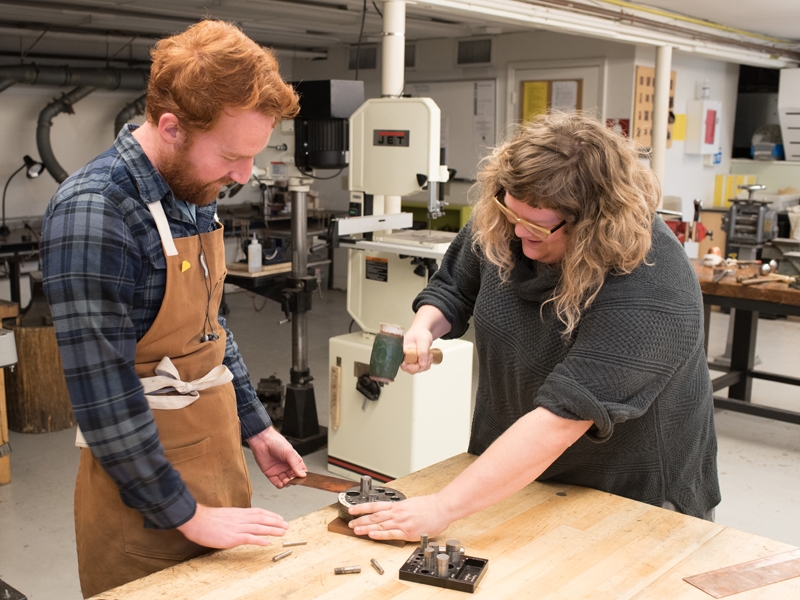
Many of our readers are aware of Penland’s engagement with the international art jewelry community through its residencies, courses, and annual auction. I am sure many are curious to hear about your relationship to jewelry. Would you please elaborate on your personal and professional interest as it relates to contemporary jewelry?
Mia Hall: In college, I took metals classes with Helen Shirk, and have continued to utilize the skills I learned in her classes in my own work. My husband, David Clemons, is a metalsmith, and a large part of his studio work is jewelry. Through David, I feel that I am always exposed to what is going on in the field of contemporary jewelry.
I have always believed that gathering inspiration for your work by looking at what other artists in your medium are making is not very effective. It makes sense to check what others are making, but for inspiration I have always looked at other disciplines. In graduate school I was very influenced by metalsmith Susan Kingsley’s work, specifically the way she utilized humor to communicate a narrative. Currently, I very much enjoy the work of Swedish maker Märta Mattsson for her use of materials; Italian jeweler Laura Forte for her bold, clean lines; and our Penland-affiliated artists Bryan Parnham, Laura Wood, Erica Bello, Ashley Buchanan, and Emily Rogstad, to name a few.
Personally, my aesthetic when it comes to jewelry is very Scandinavian: clean and minimal. When I interviewed at Penland this summer, I fretted over what to wear. At one point, David told me to stop worrying. “Nobody cares what clothes you wear as long as you wear really good jewelry,” he said. I have found that to be very true. I have noticed that many of the staff wear bold, beautiful jewelry daily, and I am slowly building my personal collection.
What are you looking forward to in your role as director?
Mia Hall: Meeting over a hundred fantastic and unique artists from all over the world coming to Penland to teach each year, as well as the 1,500 students! The opportunity to live and work in a community where creating and making is at the epicenter of everybody’s existence is incredibly exciting.
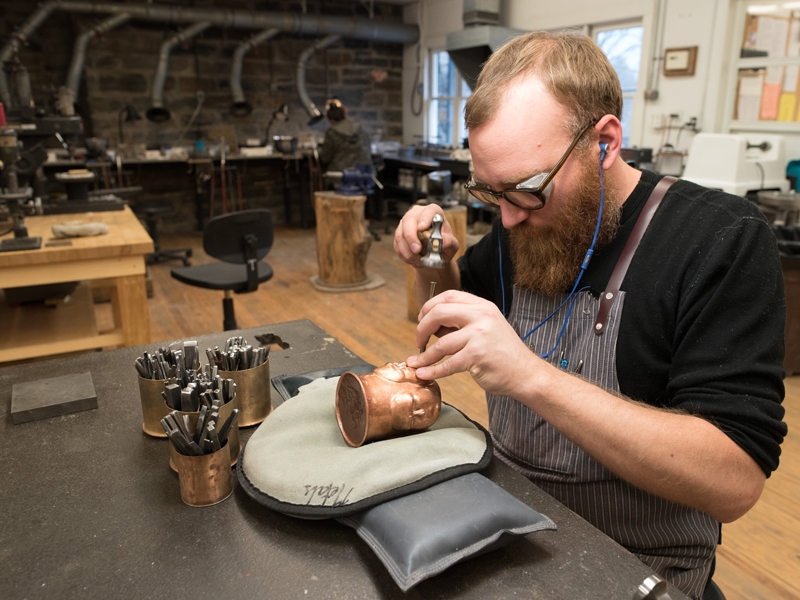
What do you feel is essential to fostering and sustaining a creative environment such as the one your predecessor, Jean McLaughlin, established at Penland?
Mia Hall: Constantly keeping an ear to the ground and seeing where change is happening in the field. When change occurs, it is important to be able to be responsive and quickly adapt. It is also important to be a leader in terms of innovation and to offer opportunities for experimentation and a widening of the field. Right now, a lot is going on in terms of new and innovative digital tools and equipment, and it is necessary to engage in this conversation. It is now possible to make objects faster and more effectively, but this ability comes with a deeply rooted fear in the craft community that machines will replace the hand. Therefore, it is also part of our responsibility to foster traditional hand skills, problem solving, material knowledge, and ingenuity in combination with this new technology.
Programs like the ones at Penland offer an opportunity to gain new skills and perspectives, but also to connect with peers and a community from all over the country, and often beyond our borders. The exchange of ideas and knowledge that happens when makers of so many backgrounds sit down and work side by side for several weeks is essential to the growth and innovation of the field.
It is also very important to me to continue Jean’s work in making these programs affordable and attainable to all artists, regardless of their financial background. Half of the close to 1,500 students who come to Penland each year receive financial assistance, ranging from a $1,000 scholarship and work-study exchanges to a fully funded class. My goal is to continue to grow the number of scholarships.
What are you reading lately?
Mia Hall: Budget sheets mostly. Blood Done Sign My Name, by Timothy Tyson, currently, and I’m eager to start Between the World and Me, by Ta-Nehisi Coates. And of course, Gift from the Hills, by Penland founder Lucy Morgan.
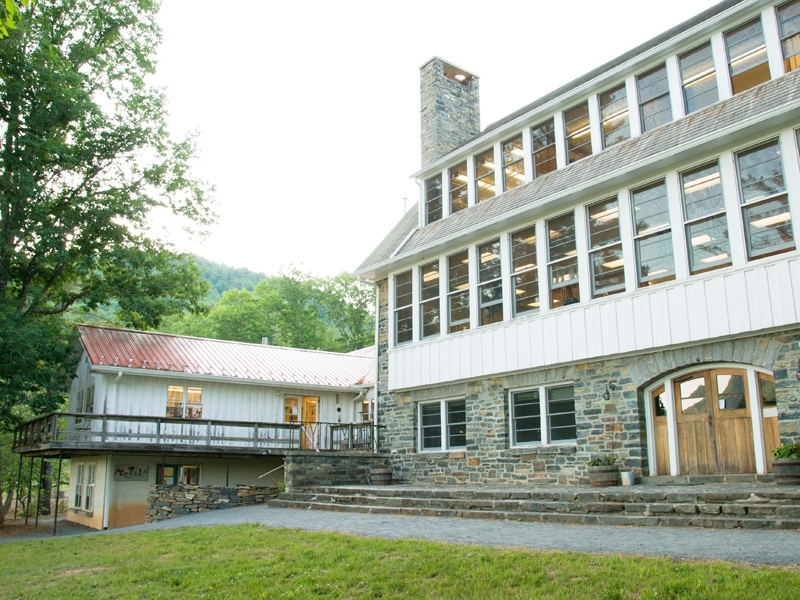
I often ask interviewees to tell our readers about some artists they admire. I would like to ask you the same question, but with the caveat to include educators and administrators who you feel are having notable impact on the field.
Mia Hall: I admire artists who can either bring about important dialogue with their work or instill a sense of wonder in the viewer. When the work does both, it becomes poetic.
I have, over the last 15 years, met some pretty amazing educators. People who work tirelessly for the betterment of their students, creating experiences and opportunities because, often, that is what some influential teacher did for them. In my graduate school cohort, all but one person works in the creative sector, and most have university teaching positions. From my group, people hold positions at the Herron School of Art, Maine College of Art, Tennessee Tech, Palomar College, the University of Wisconsin–Madison, Arizona State, University of Arkansas Little Rock, Kendall College, and the School of the Art Institute of Chicago. We attended a program very focused on teaching, and the fact that so many of us ended up as teachers indicates how successful the program is. We had very good mentors in Helen Shirk and Wendy Maruyama. They led by such example that it inspired so many of us to aspire to follow in their footsteps.
In terms of administrators, I have to say Stu Kestenbaum—recently retired from Haystack—and Jean McLaughlin. Both have had such an impact on the field of craft and education. Stu, who retired three years ago, is not quietly sitting around, but has been creating over 30 very informative and interesting podcasts interviewing makers, curators, and thought leaders from all areas of contemporary craft.
Thank you.

